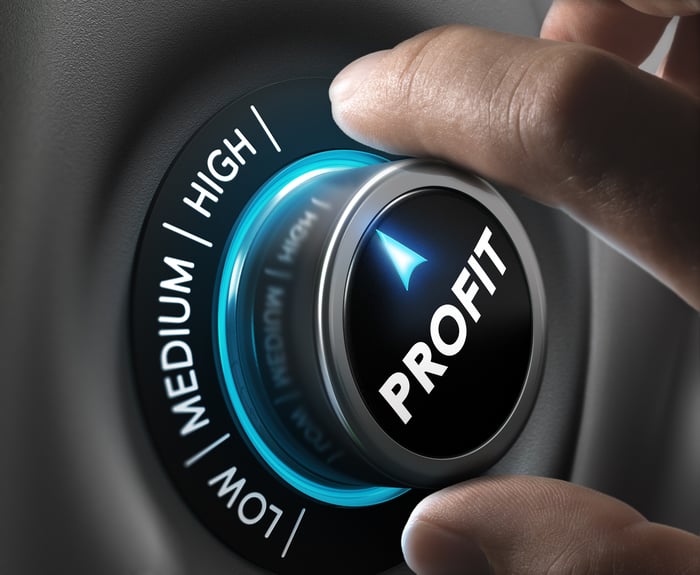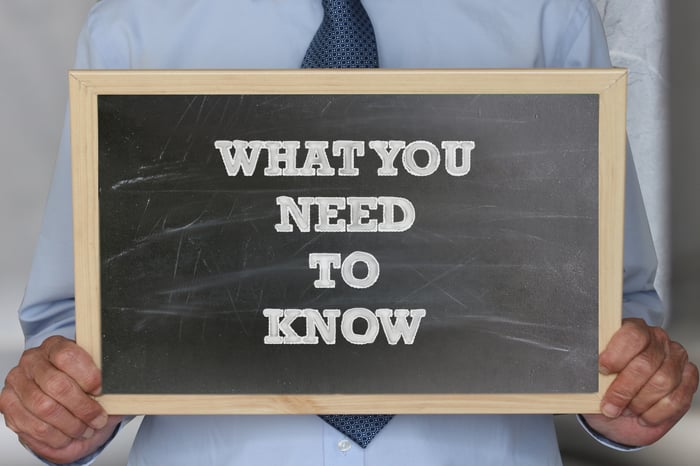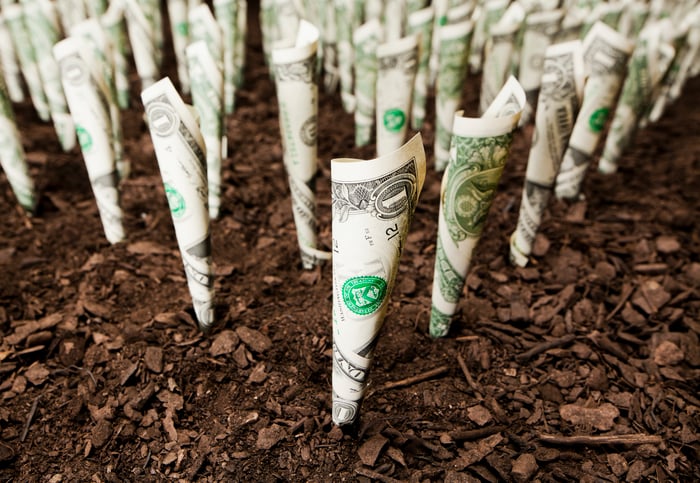Dividend stocks pay out cash (known as the stock dividend) to shareholders each year. Because dividend stocks pay shareholders regularly, they must regularly make money too -- so most dividend stocks have proven business models. Income and stability are attractive traits in a portfolio, but the key is to buy the right dividend stocks. Here’s how.

Image source: Getty Images.
Focus on the dividend yield, not the dividend amount
First off, don't just look at a company's absolute dividend amount. For example, if one company has a quarterly dividend payment of $0.80 per share and another's is $1.50, don't make the mistake of thinking the $1.50 dividend is better. Focus on the dividend yield instead, which is the current annual dividend amount divided by the current stock price. The following table might make things clearer:
|
Annual Dividend |
Stock Price |
Dividend Divided by Stock Price |
Dividend Yield |
|---|---|---|---|
|
$0.80 |
$20 |
0.04 |
4% |
|
$1.50 |
$150 |
0.01 |
1% |
Calculations by author.
See? The $0.80 dividend looks smaller than the $1.50 one, but when you consider that you pay only $20 per share to receive $0.80 per share, it's offering much more than the $1.50 dividend that costs you $150 per share.

Seek high-quality companies. Image source: Getty Images.
Focus on the companies behind the dividends, too
Remember, too, that stock prices by themselves aren't very meaningful, either. The $150-per-share stock might be undervalued and tied to an excellent, growing company, while the $20 stock might be headed south.
For successful dividend investing, you need to look for attractive dividend yields from attractive companies -- i.e. high-quality companies, with sustainable competitive advantages and great growth prospects. You'll also want them to be attractively valued, as paying too much for a great company isn't a recipe for success.
Don't just seek the highest yields
Next, don't be enticed by the highest yields you can find. High-yield dividends can be risky. Remember the math they're based on, after all, demonstrated in the preceding table: A dividend yield is calculated by taking the annual dividend amount (for example, four times the current quarterly dividend amount) and dividing it by the current stock price. (You might think if it as a fraction, too, with the annual dividend amount on top and the stock price below.) While dividend amounts are generally fixed for a while, until the company changes them, stock prices change all the time. So if the stock price falls and the dividend stays the same, the yield will rise. Thus, many stocks sport steep dividend yields not because the underlying company is extremely generous, but instead because the stock price has plunged -- and a stock that has plunged has probably done so for a reason. Even worse, companies in deep trouble may reduce, suspend, or eliminate their dividends.

Image source: Getty Images.
Look for dividend growth
Another factor to consider in dividend investing is a dividend's growth rate. Know that smaller yields can perform as well or better than bigger yields -- if they're growing faster. If you're looking at a 3% yield from a relatively quickly growing company and a 4% yield from healthy but slow-growing company, the 3% dividend might soon be paying you more than the 4% one. Indeed, some studies have suggested that the biggest yields are not generally the best performers. Economist Kenneth French's, for example, found that when he divided dividend-paying stocks from 1928 through 2013 into five quintiles by size of dividend, the highest-yielding quintile did not sport the highest average annual returns. Instead, the quintile with the second-highest yields performed the best. (Quintile five averaged 10.85%, if you're wondering, while quintile four averaged 11.65%.)

Image source: Getty Images.
Check the payout ratio
A stock's dividend payout ratio should also be of great interest when you're looking for the best dividend stocks. It shows the portion of earnings that are being paid out in dividends, and smaller numbers are better, reflecting more room for dividend growth. A payout ratio of 100% or more would reflect a company without much wiggle room and with little likelihood of hiking its payout anytime soon. So favor companies with low or reasonable payout ratios, such as perhaps 75% or less.
Don't be too rigid about it, though. A company might have a payout ratio of 120%, but only because it had an uncharacteristically bad year. If it's expected to post strong earnings soon, you might worry less about the high payout ratio. You might also favor consistency. If a company has been paying a dividend without interruption for, say, 45 years, it's going to take that streak seriously and will want to keep it going. If a company has consistently grown its top and/or bottom line, that can be a sign of effective management and the ability to keep paying dividends.

Image source: Getty Images.
Know that dividends deliver
Finally, know that you're making a smart decision in seeking to add dividends to your portfolio -- because dividend stocks actually tend to perform really well. According to Ned Davis Research, for example, dividend-paying stocks averaged an annual gain of 9.3% from 1972 through 2014, while non-dividend payers averaged just 2.6%. Want more? According to Fidelity data, from 1993 through 2014, dividends accounted for about 40% of the 10.3% average annual return of the S&P 500.
The "effective yield" concept can help you see the value of dividend investing. Imagine, for example, that you buy shares of Home Surgery Kits (ticker: OUCHH), which is trading at $100 per share and pays $4 in annual dividends, for a yield of 4%. If it hikes its payout by 7% for a decade, that $4 annual dividend will become $7.88. If you're collecting $7.88 per share for shares you bought for $100, that's an effective 7.8% yield for you. When you invest in growing dividends, the amount you collect from them each year tends to grow -- on top of any stock-price appreciation.
Dividend investing is a very powerful and often underappreciated way to grow your wealth. With the information we've covered here, you'll likely do even better at it.




